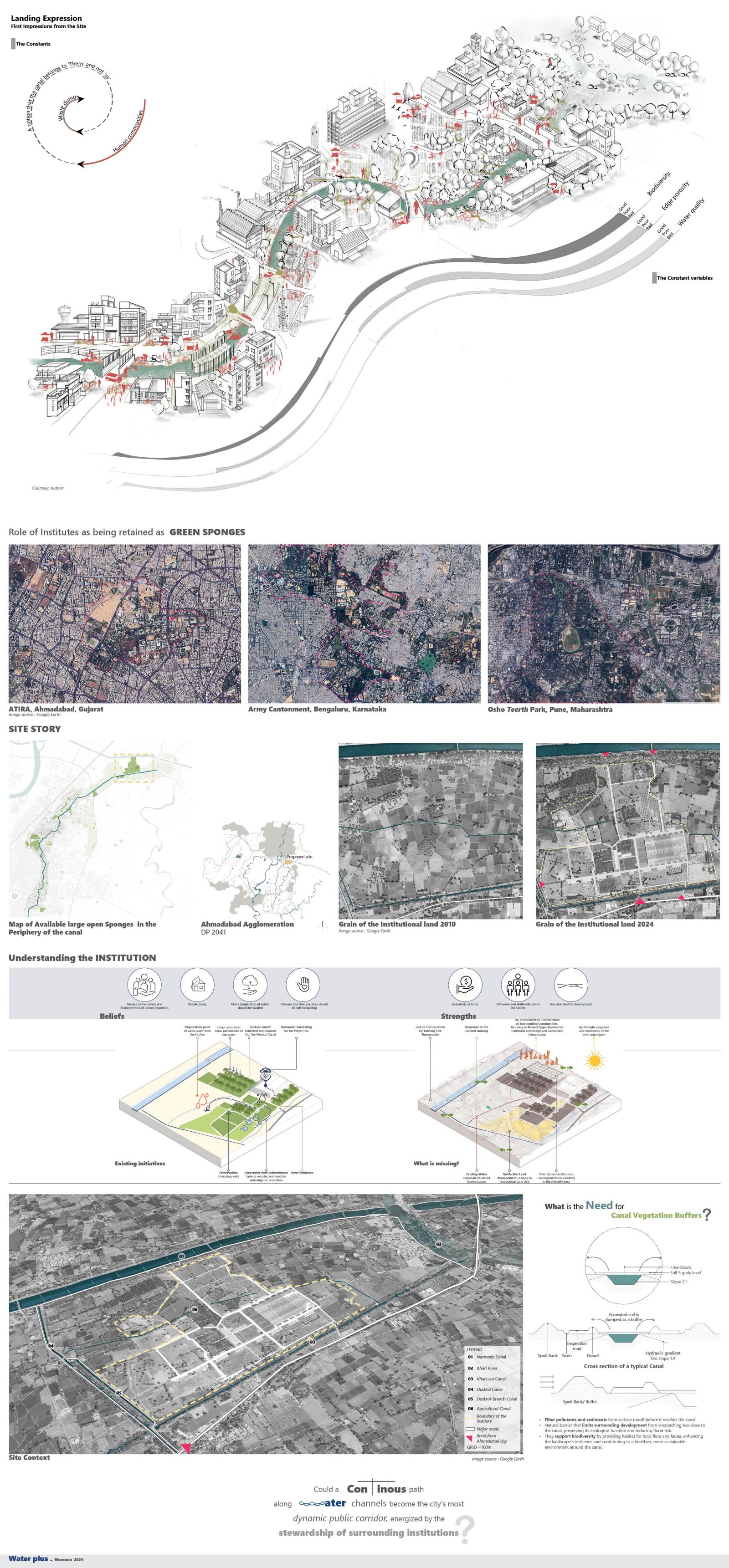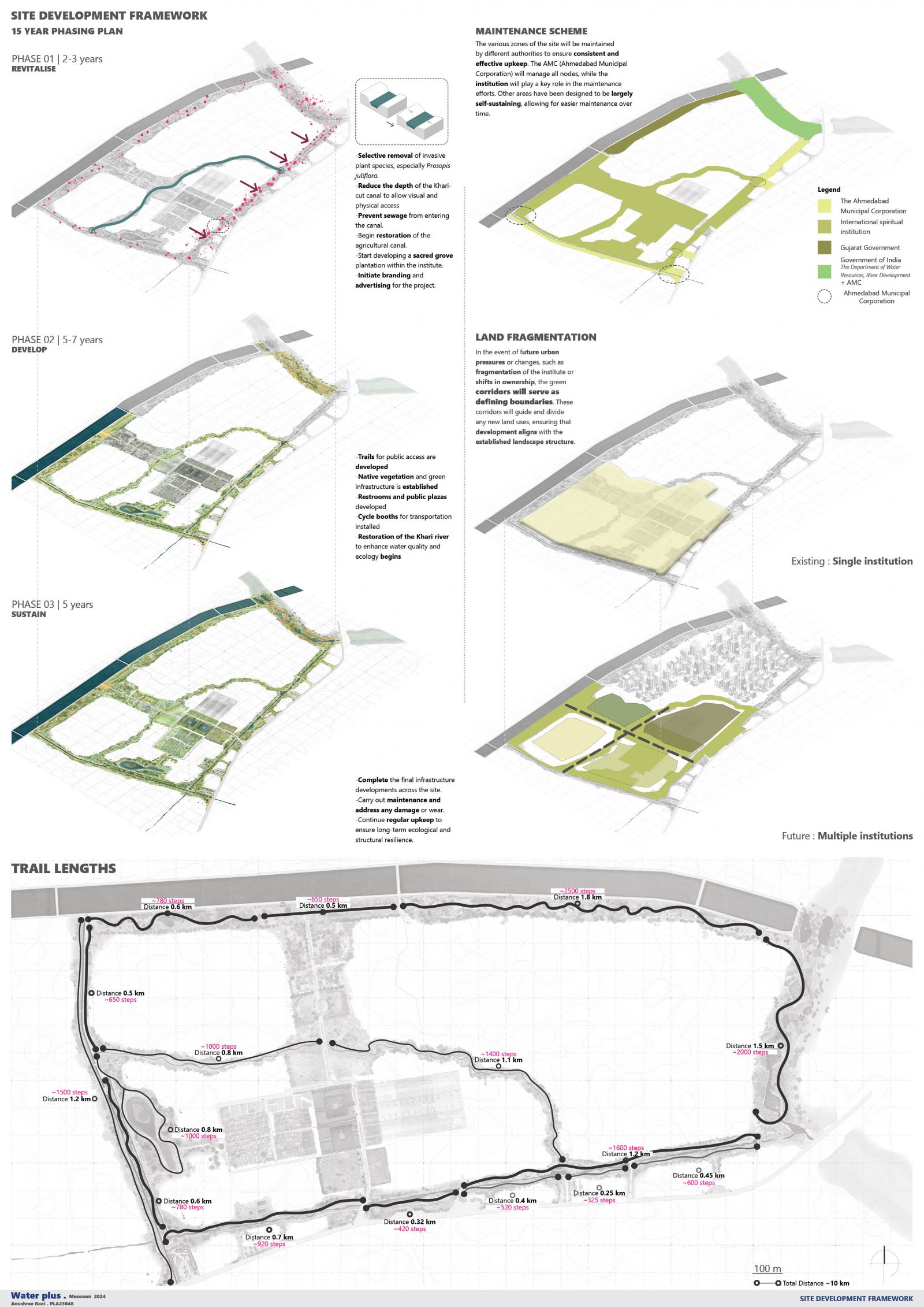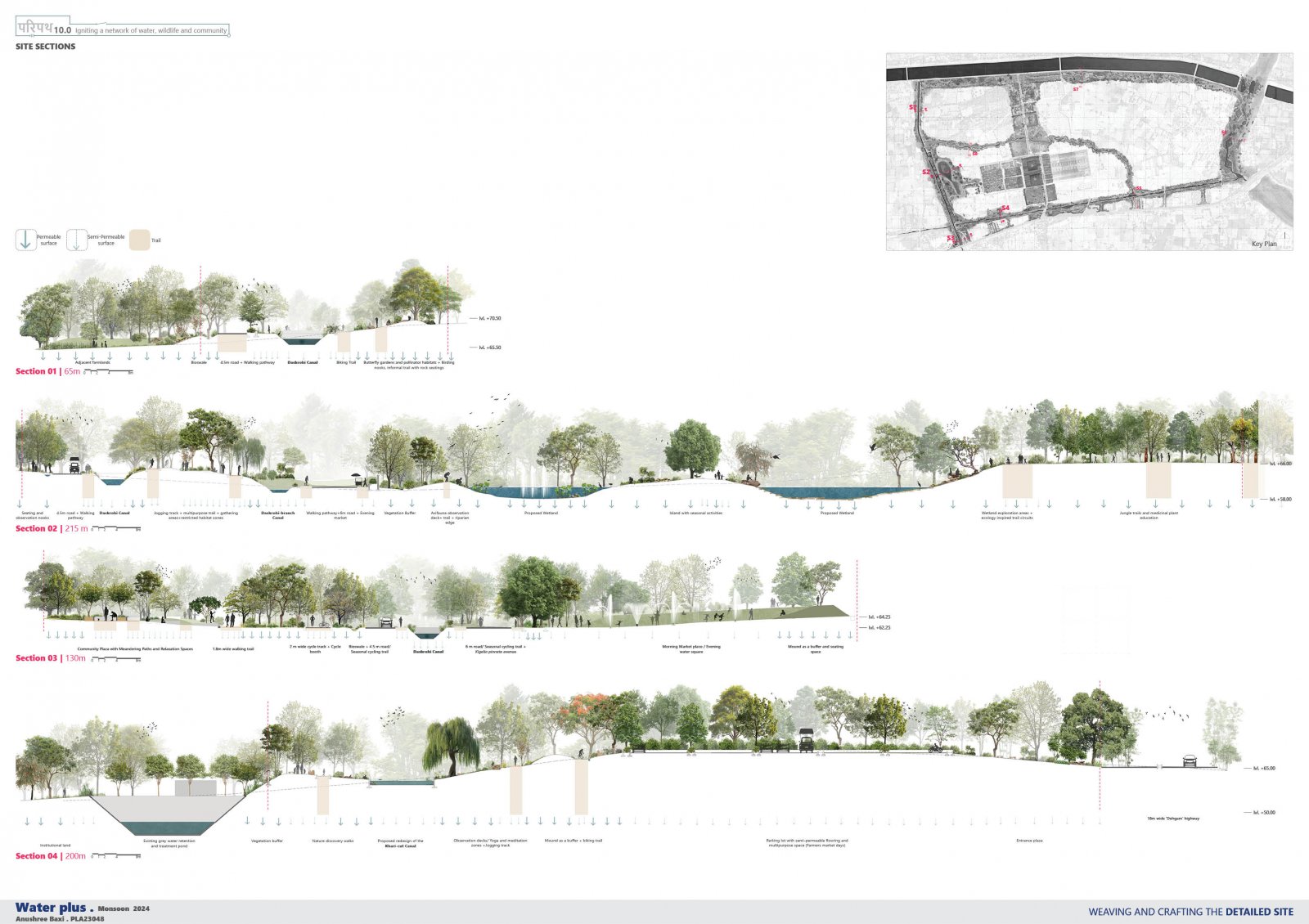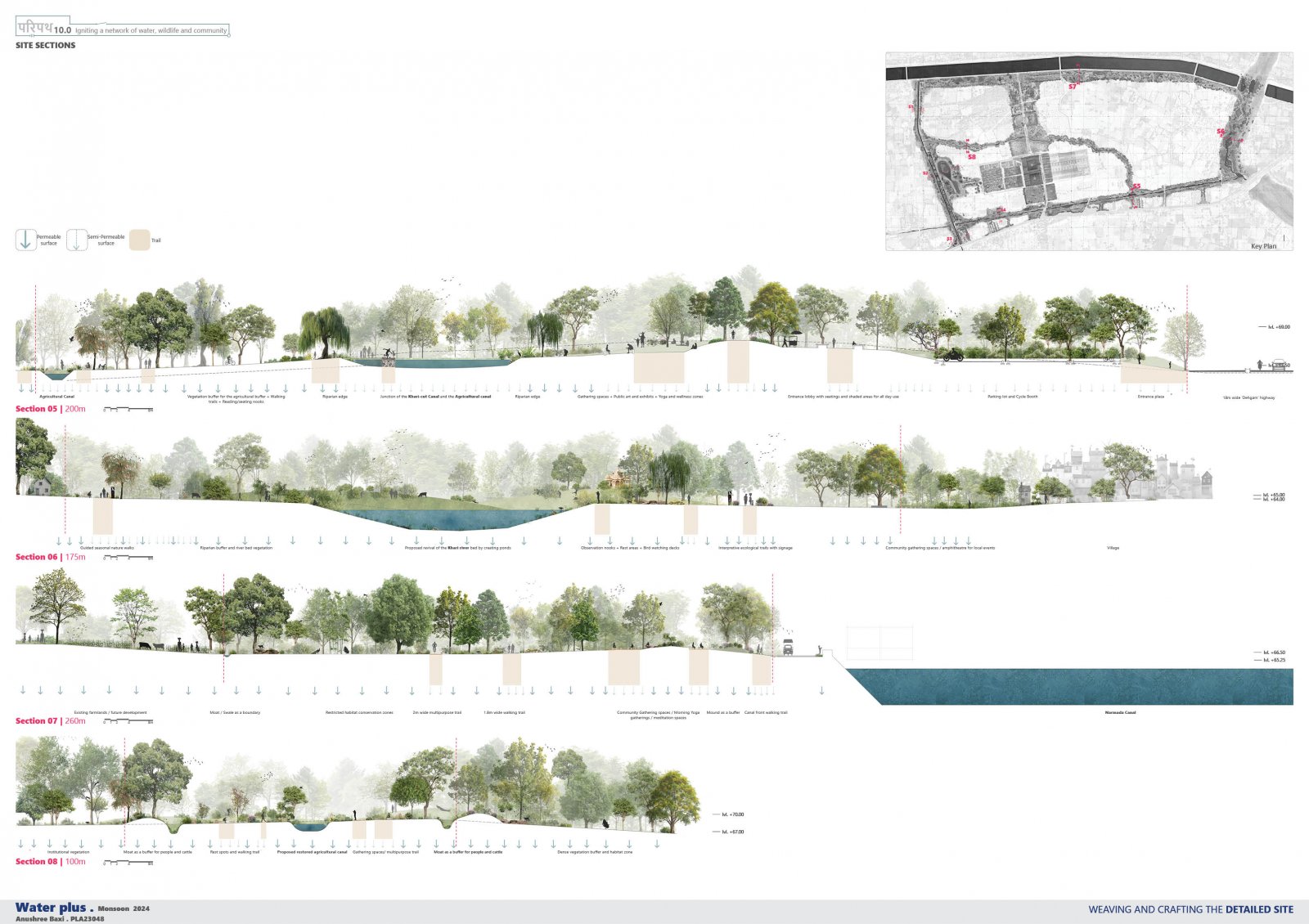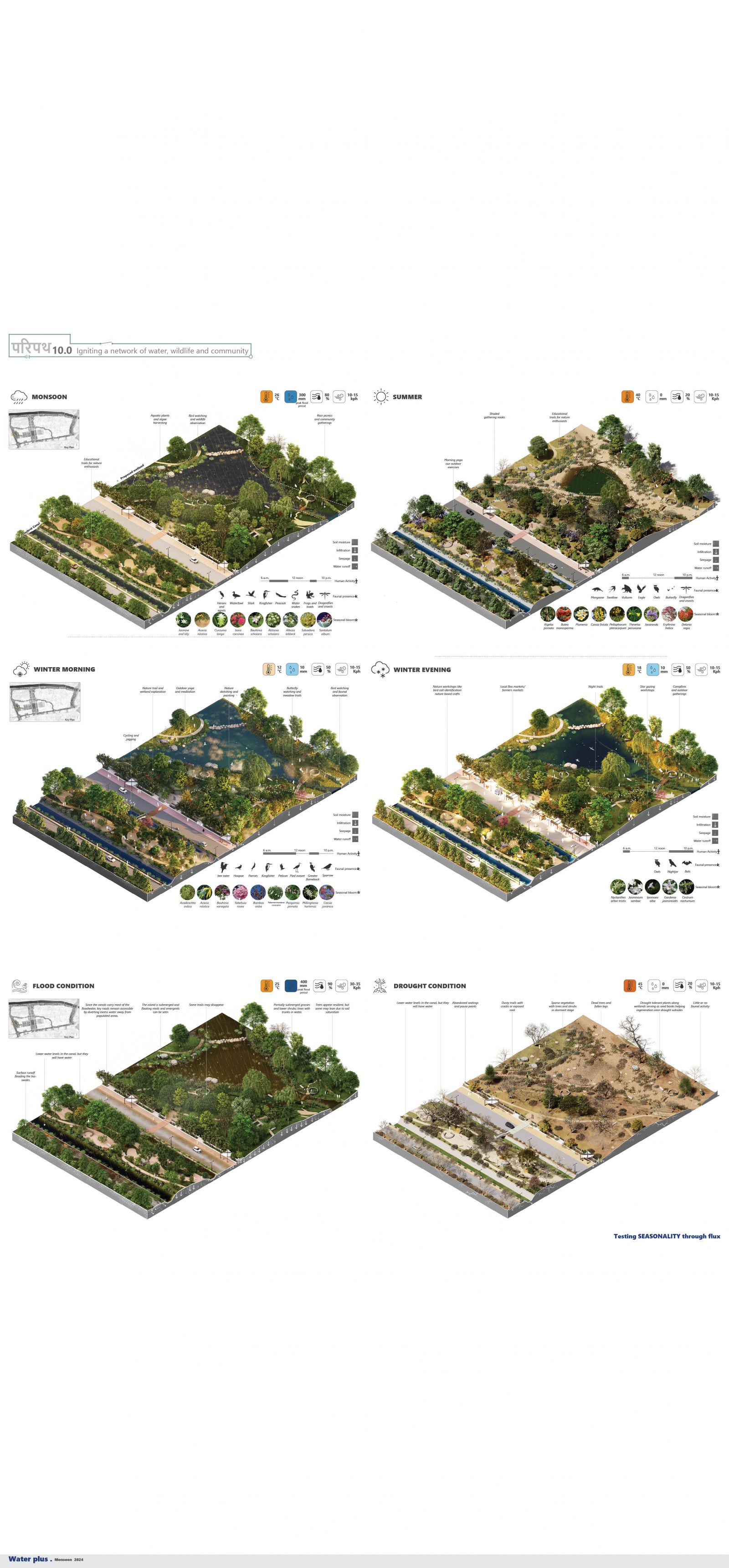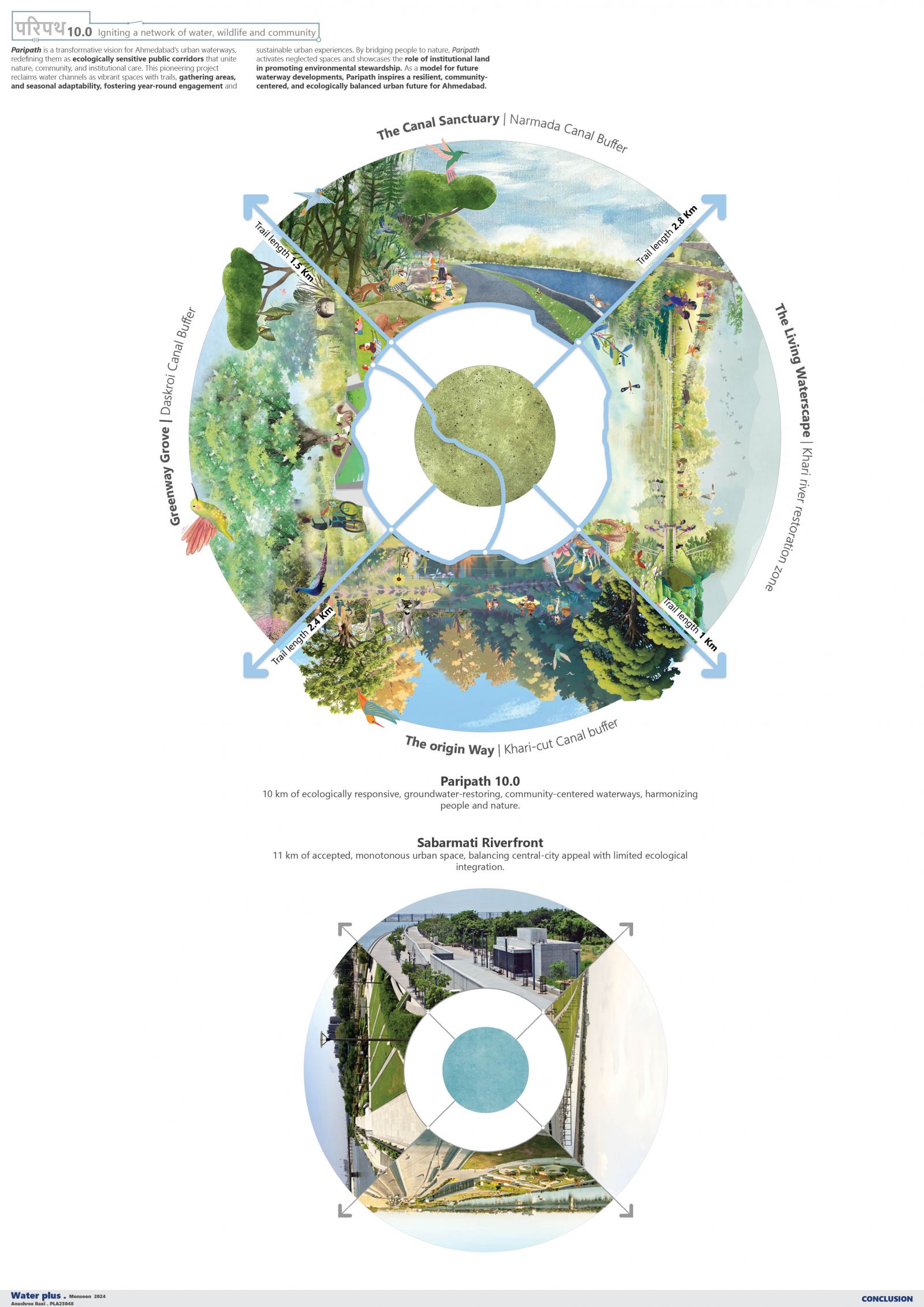Your browser is out-of-date!
For a richer surfing experience on our website, please update your browser. Update my browser now!
For a richer surfing experience on our website, please update your browser. Update my browser now!
As our cities expand, urban green spaces—often referred to as the “lungs” of the city—are increasingly vanishing. However, a few resilient green areas remain, many of which belong to large institutional or government campuses. On the northeastern edge of Ahmedabad, a notable 400-acre plot owned by an international spiritual organization serves as one such vital green sponge. When viewed from above, this land is framed by three water channels, with the Khari River bordering its far edge. This project envisions transforming these interconnected water edges into a dynamic public corridor, addressing the needs of the city’s growing population while supporting local ecology and establishing corridors for biodiversity. With the institute at its core, this initiative fosters an enduring connection to the surrounding waterway public spaces, ensuring their preservation amid the rapid development anticipated from the proposed Ahmedabad-Gandhinagar metropolitan expansion. This vision not only serves the community but also safeguards a green sanctuary in the face of impending urbanization.
View Additional Work